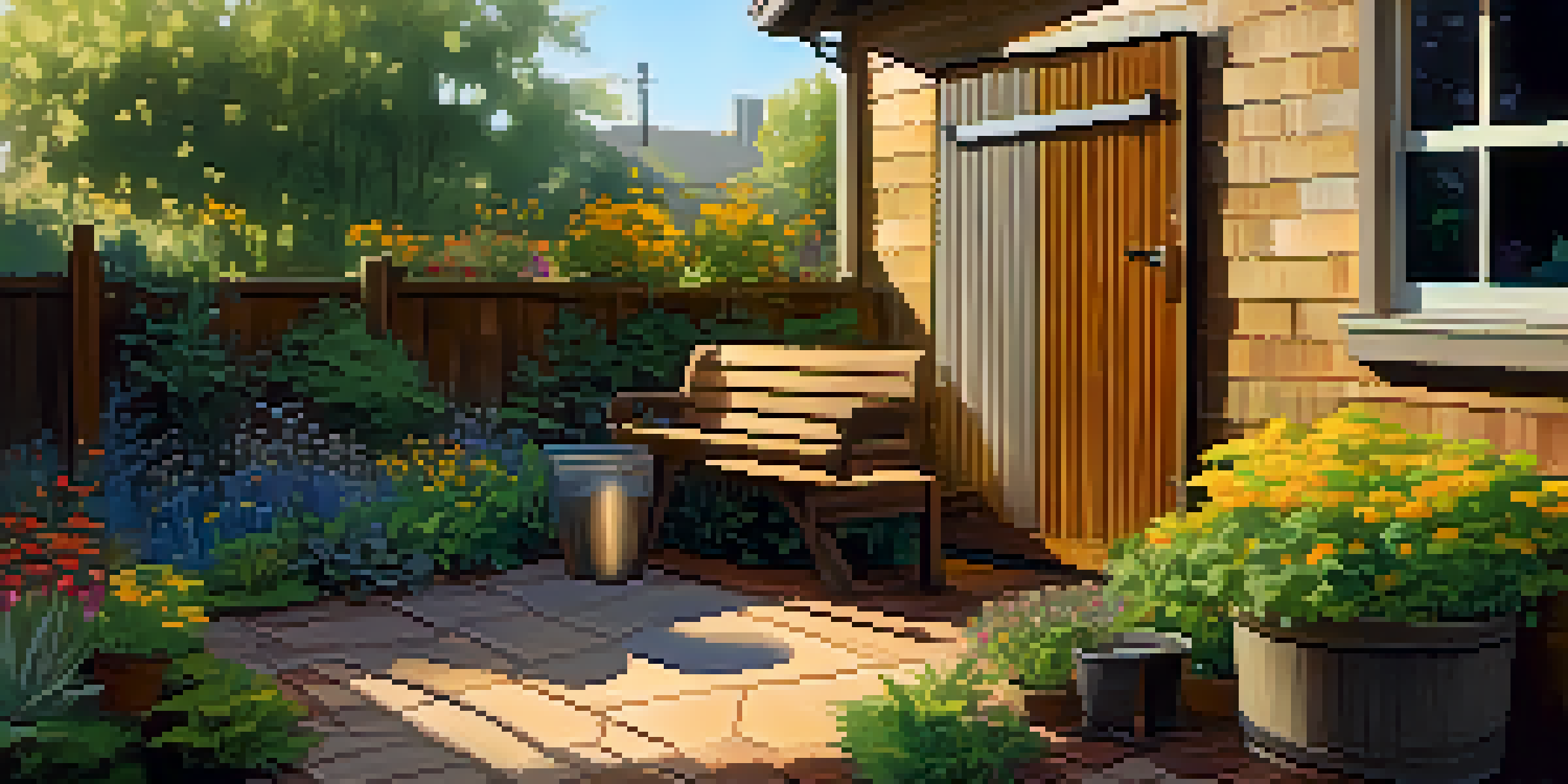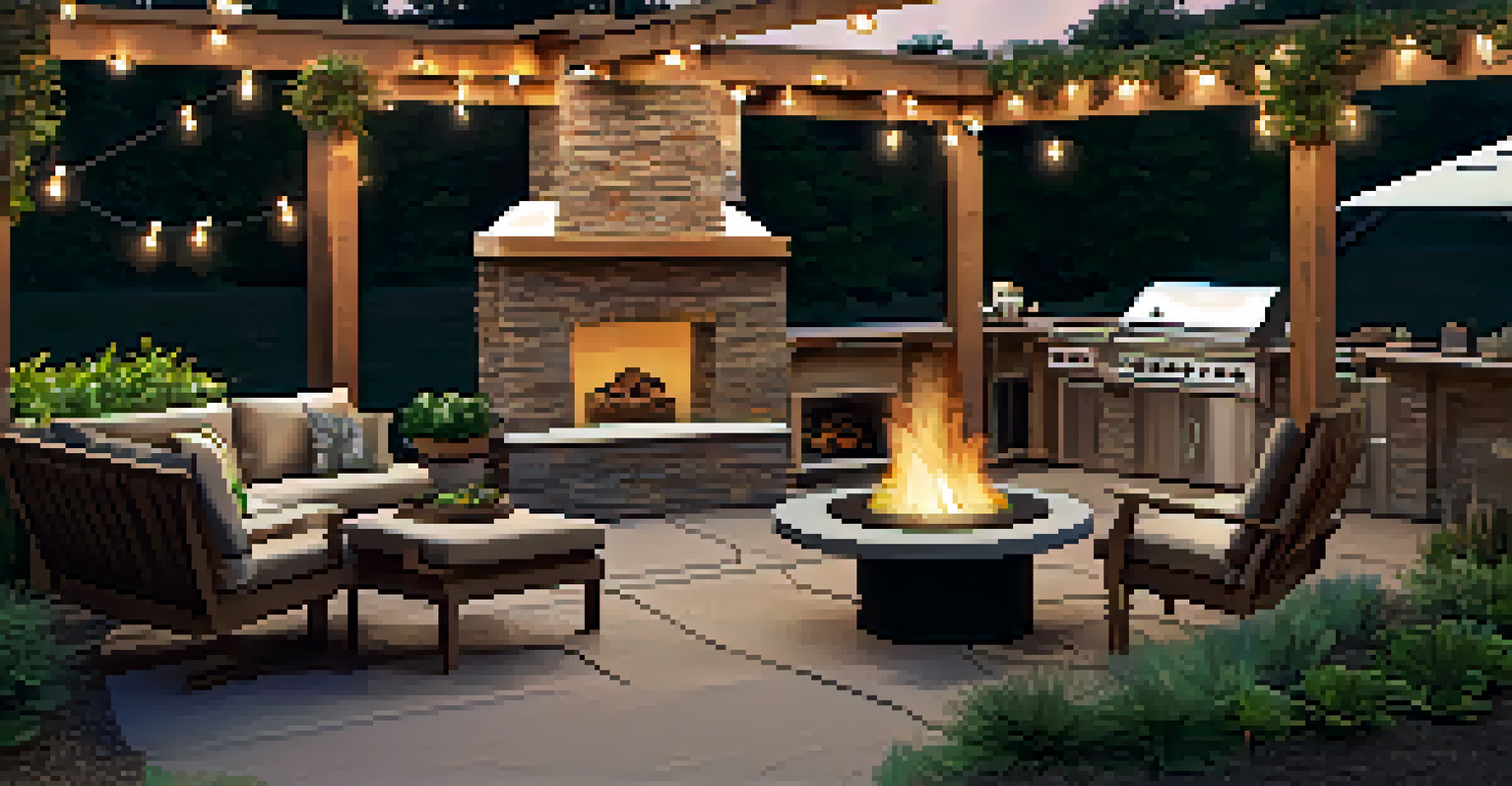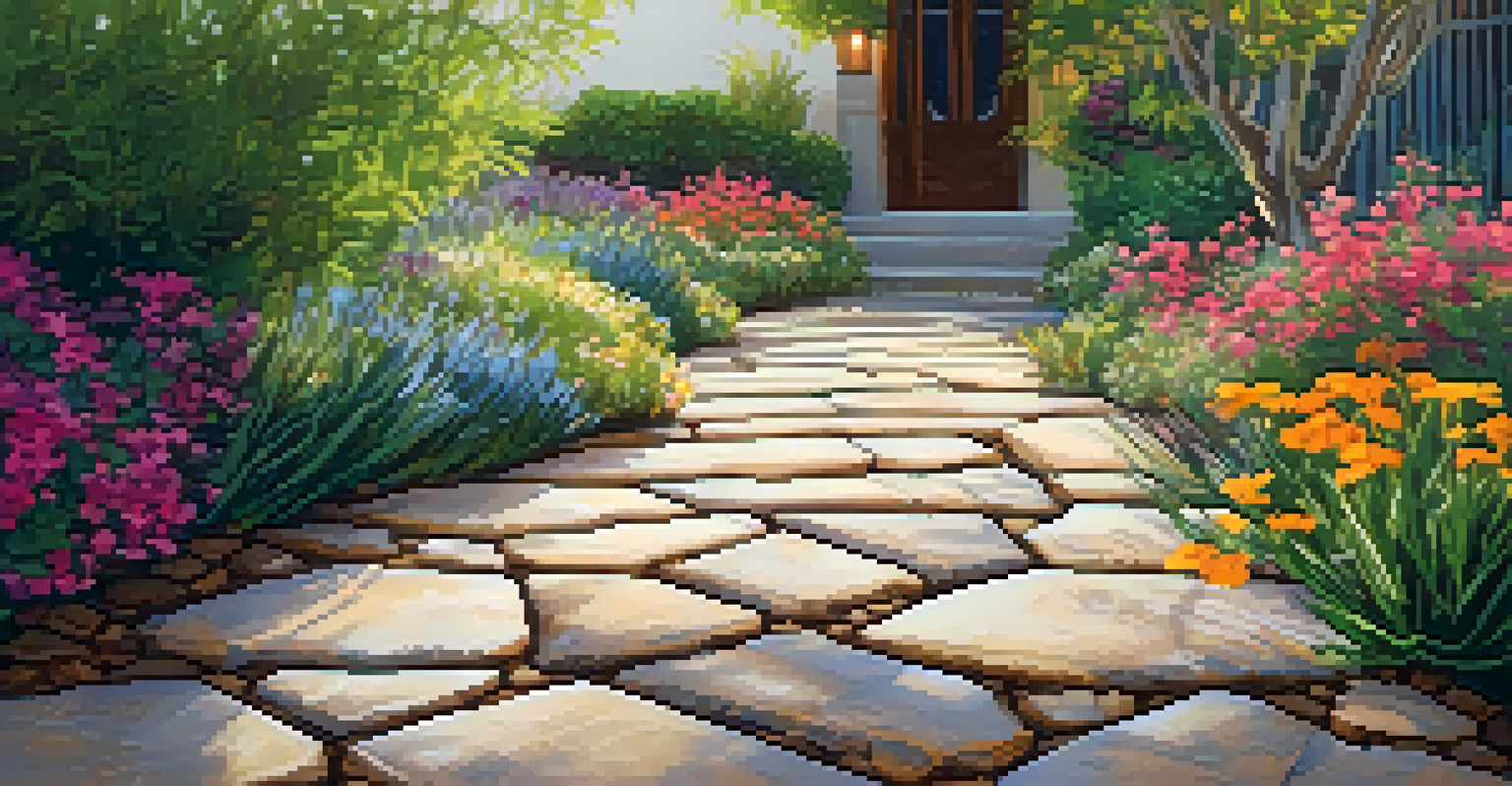Creating Energy-Efficient Outdoor Spaces for Your Home

Understanding Energy Efficiency in Outdoor Spaces
Energy efficiency isn't just for your home; it can extend to your outdoor spaces too. This means using resources wisely to reduce energy consumption while maximizing enjoyment. Think of it as creating a harmonious balance between nature and modern living.
The environment is where we all meet; where we all have a mutual interest; it is the one thing all of us share.
By focusing on energy-efficient practices outdoors, you can enjoy your garden or patio while also being kind to the planet. This could involve everything from choosing the right plants to harnessing solar power for lighting. Understanding the fundamentals of energy efficiency sets the stage for a more sustainable lifestyle.
Ultimately, energy-efficient outdoor spaces can lead to lower utility bills and a smaller carbon footprint. When you make thoughtful choices about how you design and use your outdoor areas, you’re not just improving your home; you’re contributing positively to the environment.
Choosing Native Plants for Sustainability
One of the best ways to create an energy-efficient outdoor space is by selecting native plants. These plants are well-adapted to your local climate and require less water and maintenance. Imagine a garden that thrives without constant attention—that’s the magic of native flora.

Native plants also support local wildlife, including birds and pollinators, which helps maintain ecological balance. By creating a habitat for these creatures, you're not just enhancing your outdoor space; you're fostering a thriving ecosystem right at home. Plus, they often provide beautiful blooms and textures throughout the seasons.
Embrace Native Plants for Efficiency
Choosing native plants reduces water usage and supports local wildlife, enhancing sustainability in your outdoor spaces.
Incorporating native plants can significantly reduce your reliance on chemical fertilizers and pesticides, making your space healthier for both you and the environment. Choosing the right plants is a simple yet impactful step toward energy efficiency and sustainability.
Implementing Smart Water Management Techniques
Water management is crucial for energy-efficient outdoor spaces. Implementing smart techniques like rainwater harvesting can dramatically reduce your water consumption. Picture a rain barrel collecting water from your roof, ready to nourish your garden when needed—that's both practical and eco-friendly.
Nature does not hurry, yet everything is accomplished.
Drip irrigation systems also allow for precise watering, ensuring your plants get exactly what they need without waste. This method minimizes water runoff and keeps moisture at the root level, promoting healthier plants. It's a great way to save time and resources while keeping your garden flourishing.
Finally, consider xeriscaping, a landscaping method that reduces or eliminates the need for irrigation. By using drought-resistant plants and thoughtful design, you can create a stunning outdoor space that thrives on minimal water. This not only conserves water but also cuts down on energy used for pumping and treating water.
Integrating Energy-Efficient Lighting Solutions
Lighting plays a significant role in creating inviting outdoor spaces, especially during the evenings. Switching to energy-efficient LED lights can drastically reduce energy use while providing excellent illumination. Imagine your patio aglow with warm, inviting light that doesn’t break the bank.
Solar-powered lights are another fantastic option for outdoor areas. These lights harness the sun's energy during the day, shining brightly at night without costing you a dime. Plus, they come in a variety of styles, so you can choose what best fits your outdoor aesthetics.
Smart Water Management Saves Resources
Implementing techniques like rainwater harvesting and drip irrigation can significantly minimize water consumption in your garden.
By strategically placing lights to highlight pathways or focal points in your garden, you enhance safety and beauty while keeping energy consumption low. Thoughtful lighting design can transform your outdoor spaces into a magical retreat without harming the environment.
Designing with Sustainable Materials
Choosing sustainable materials for your outdoor space can significantly impact your energy footprint. Opt for recycled or reclaimed materials, like reclaimed wood for decking or fencing. This not only reduces waste but also adds character and charm to your space.
Consider using permeable paving stones that allow rainwater to filter through and replenish the groundwater. These materials help prevent runoff while providing a solid surface for patios or walkways. Imagine walking on a beautiful patio that’s both chic and environmentally friendly.
Additionally, bamboo is a fantastic choice for outdoor furniture or structures. This fast-growing, renewable resource is sturdy and stylish, making it a perfect option for energy-efficient designs. By focusing on sustainable materials, you create a space that’s beautiful and responsible.
Creating Functional Outdoor Living Areas
Designing functional outdoor living areas can greatly enhance your home's efficiency. Think about multi-purpose spaces that can serve as dining areas, lounges, or even workspaces. This allows you to utilize your outdoor environment more effectively, reducing the need for additional indoor space.
Incorporating features like outdoor kitchens or fire pits can make your outdoor areas more inviting and usable year-round. Picture hosting friends for a barbecue under the stars or enjoying a cozy evening by the fire, all while being conscious of energy use.
Sustainable Materials Enhance Design
Using recycled or sustainably sourced materials not only reduces your environmental impact but also adds unique character to your outdoor areas.
By creating versatile outdoor spaces, you can spend more time outside, reducing reliance on energy-consuming indoor activities. A well-designed outdoor living area not only beautifies your home but also encourages a more sustainable lifestyle.
Utilizing Eco-Friendly Outdoor Furniture
When choosing outdoor furniture, consider eco-friendly options that are made from sustainable materials. Look for items crafted from recycled plastics or sustainably sourced wood. This small change can significantly reduce your environmental impact while still providing comfort and style.
Additionally, furniture that is designed for durability can help minimize waste. Instead of replacing worn-out pieces every few years, invest in high-quality items that will last. Imagine enjoying your patio furniture for years to come, all while knowing you made a responsible choice.

A well-furnished outdoor space invites relaxation and enjoyment, and when done sustainably, it enhances your home’s energy efficiency. Choosing eco-friendly furniture is not just a trend; it's a step toward a more sustainable future.
Maintaining Your Energy-Efficient Outdoor Space
Once you've created an energy-efficient outdoor space, maintaining it is key to ensuring its longevity. Regular upkeep, like pruning native plants or cleaning outdoor furniture, helps your area stay vibrant and functional. Think of it as nurturing a living ecosystem that thrives with your care.
Seasonal maintenance can also prevent energy waste. For example, clearing gutters and ensuring proper drainage helps manage rainwater efficiently. By staying proactive, you can protect the investments you've made in your outdoor space.
Lastly, educating yourself about sustainable practices will keep you informed about new techniques and products. The more you learn, the better equipped you'll be to maintain your energy-efficient outdoor oasis. A little effort goes a long way in preserving the beauty and efficiency of your outdoor areas.